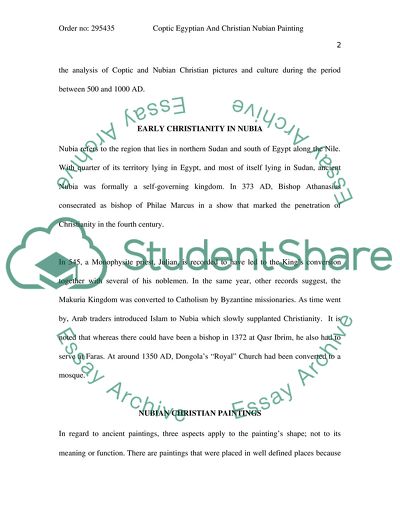Cite this document
(“Coptic Egyptian and Christian Nubian painting Essay”, n.d.)
Coptic Egyptian and Christian Nubian painting Essay. Retrieved from https://studentshare.org/visual-arts-film-studies/1554492-coptic-egyptian-and-christian-nubian-painting
Coptic Egyptian and Christian Nubian painting Essay. Retrieved from https://studentshare.org/visual-arts-film-studies/1554492-coptic-egyptian-and-christian-nubian-painting
(Coptic Egyptian and Christian Nubian Painting Essay)
Coptic Egyptian and Christian Nubian Painting Essay. https://studentshare.org/visual-arts-film-studies/1554492-coptic-egyptian-and-christian-nubian-painting.
Coptic Egyptian and Christian Nubian Painting Essay. https://studentshare.org/visual-arts-film-studies/1554492-coptic-egyptian-and-christian-nubian-painting.
“Coptic Egyptian and Christian Nubian Painting Essay”, n.d. https://studentshare.org/visual-arts-film-studies/1554492-coptic-egyptian-and-christian-nubian-painting.


